Valar Morghulis queridos caminantes | Valar Morghulis dear travelers
Esta semana ha sido un tanto pesada con la perdida de mi conexión a internet, el ánimo se me derrumbó por varios días pero ahora que el orden ha vuelto a reinar sobre mi casa y el internet esta nuevamente funcionando (por ahora) he decidido continuar llevando este contenido que tanto me gusta.
Hace poco releyendo la gran enciclopedia del Mundo de Canción de Hielo y Fuego me di cuenta de que hay una extensa, ¡pero de verdad extensa variedad de fauna que se menciona en muchos tropos de las distintas obras de George RR Martin y pensé “! podría hablar un poquito de todos los animales extraños y curiosos que hay en estos libros, claro que si ¡”.
La ausencia de internet no fue del todo mala pues me dio tiempo para ponerme a releer la obra de George RR Martin (Que no es poca, aunque algunos libros como Tormenta de Espadas y Choque de Reyes no están en este momento conmigo) para poder traer con nosotros a estas extrañas criaturas, seguramente muchas les asombraran. Espero lo disfruten de buen grado.
This week has been a bit heavy with the loss of my internet connection, my mood collapsed for several days but now that order has returned to reign over my house and the internet is working again (for now) I have decided to continue bringing this content that I like so much.
Recently re-reading the great encyclopedia of the World of A Song of Ice and Fire I realized that there is an extensive, but really extensive variety of fauna that is mentioned in many tropes of the various works of George RR Martin and I thought "I could talk a little bit about all the strange and curious animals that are in these books, of course!
The absence of internet was not all bad because it gave me time to reread George RR Martin's work (which is not little, although some books like Storm of Swords and Clash of Kings are not with me at the moment) to bring with us these strange creatures, surely many of them will amaze you. I hope you enjoy it willingly.
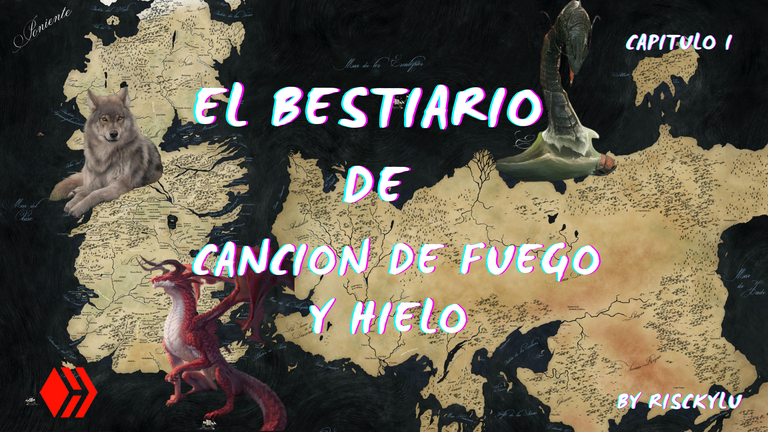

La fauna y las bestias del mundo de Canción de Hielo y Fuego | The animals and beasts of the world of Song of Ice and Fire.
El bestiario de Hielo y Fuego es increíblemente extensor y en todos los continentes desde el conocido Westeros en el extremo Oeste del mundo hasta las sombras desconocidas de Asshai en el lejano Este, las criaturas y bestias vagan por el mundo esperando ser descubiertas y aquí te presentare algunas de las más asombrosas y extrañas; aunque algunas ya las has visto, no dejan de ser fascinantes.
The bestiary of Ice and Fire is incredibly vast and on every continent from the familiar Westeros in the far west of the world to the unknown shadows of Asshai in the far east, creatures and beasts roam the world waiting to be discovered and here I will introduce you to some of the most amazing and bizarre; although some you have already seen, they are still fascinating.


fuente/source de BlackWolf-Studio

El libro de las bestias | The book of beasts
Dragones | Dragons
Todos ya conocemos a las enormes y letales bestias voladoras de la Antigua Valyria, los dragones son sin duda la criatura más importante hasta la fecha del mundo de Canción de Hielo y Fuego. Son el emblema de la casa Targaryen y por mucho tiempo fueron usados como arma de guerra y símbolo de poder tras la llegada de Aegon el Conquistador al continente de Westeros.
Antes de ser la punta de lanza de los ejércitos Targaryen fueron también el arma más poderosa del antiguo reino de Valyria quienes les domesticaron y sobre sus alas causaron terror en todo el continente de Essos.
No se sabe exactamente el origen preciso de los dragones, pero los primeros humanos en dar con ellos fueron los valyrios quienes descubrieron los primeros dragones en el continente de Essos, específicamente en una región volcánica conocida como las Catorce Llamas, se cree también que pudieron venir del continente de Sothoryos o de Ulthos.
Pueden llegar a crecer mucho, a tal punto de devorar un carruaje de un bocado, su aliento es de fuego, sus escamas duras como el hierro y sus dientes tan largos como espadas, hay algunas diferencias entre los dragones que vimos en la serie de Game Of Thrones y los que se nos relatan en los libros, pero eso será para otro momento.
We all already know the huge and lethal flying beasts of Ancient Valyria, dragons are undoubtedly the most important creature to date in the world of A Song of Ice and Fire. They are the emblem of House Targaryen and were long used as a weapon of war and symbol of power after the arrival of Aegon the Conqueror on the continent of Westeros.
Before being the spearhead of the Targaryen armies they were also the most powerful weapon of the ancient kingdom of Valyria who tamed them and on their wings caused terror throughout the continent of Essos.
It is not known exactly the precise origin of the dragons, but the first humans to find them were the Valyrians who discovered the first dragons in the continent of Essos, specifically in a volcanic region known as the Fourteen Flames, it is also believed that they could have come from the continent of Sothoryos or Ulthos.
They can grow a lot, to the point of devouring a carriage in one bite, their breath is of fire, their scales as hard as iron and their teeth as long as swords, there are some differences between the dragons we saw in the Game Of Thrones series and those we are told in the books, but that will be for another time.
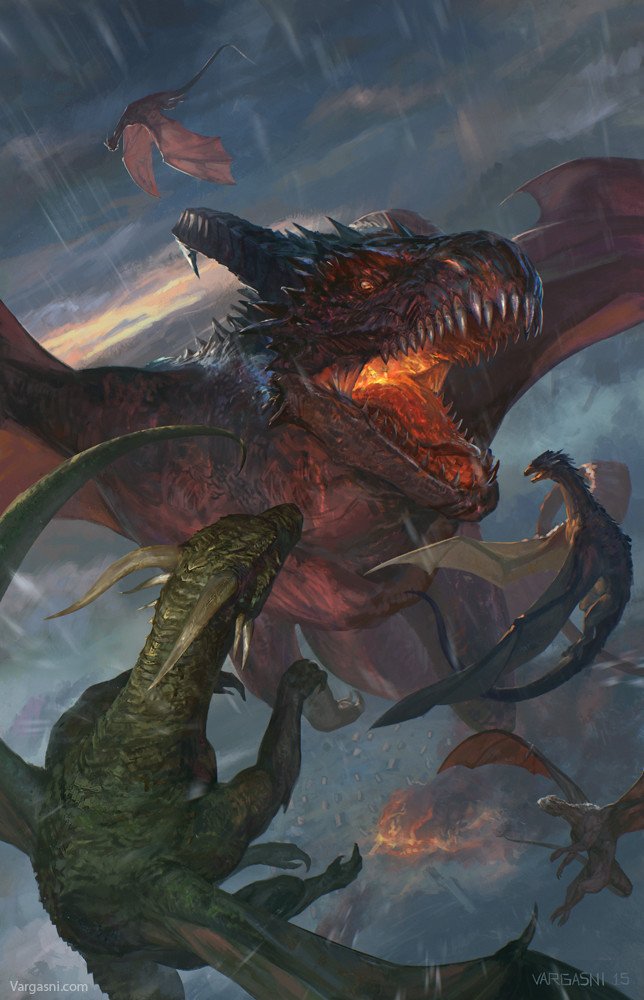
fuente/source de Randy Vargas
Guivernos | Wyvern
De apariencia de reptil muy similar a los dragones, estos feroces lagartos alados son propios del casi inexplorado continente de Sothoryos, muy poco sabe aún de ellos. Los Guivernos no son capaces de escupir fuego como los dragones, pero son mucho más violentos, feroces y de un apetito insaciable
Viven en lo profundo de las selvas y pantanos de Sothoryos y los hay de muchos tamaños; el más pequeño de es Pazaparda que es del tamaño de un mono pero cazan en gran número y son bastante feroces y voraces.
El más peligroso depredador de esta especie son los Ala Sombra, de color negro y enormes alas como de murciélago, en la noche era casi imposible distinguirlo a pesar de su gran tamaño.
La diferencia principal y más destacable entre los dragones y los Wyvers es que los dragones de la mitología de Canción de Hielo y Fuego son cuadrúpedos y sus alas están separadas de las patas delanteras, cosa muy distinta a lo visto en la serie, los Guivernos en cambio solo tienen dos patas traseras y sus alas también les sirven de patas delanteras.
Reptilian in appearance very similar to dragons, these ferocious winged lizards are native to the almost unexplored continent of Sothoryos, very little is known about them yet. Guiverns are not capable of spitting fire like dragons, but they are much more violent, ferocious and insatiable in appetite.
They live deep in the jungles and swamps of Sothoryos and come in many sizes; the smallest of which is Brow-Belly which is the size of a monkey but they hunt in great numbers and are quite ferocious and voracious.
The most dangerous predator of this species is the Shadow-Wing, black in color and with huge bat-like wings, at night it was almost impossible to distinguish despite its large size.
The main and most notable difference between dragons and Wyvers is that the dragons in the mythology of Song of Ice and Fire are quadrupeds and their wings are separated from their front legs, which is very different from what is seen in the series, the Wyvers instead only have two hind legs and their wings also serve as front legs.

Lagartos Tatuados | Tattooed Lizards
En las praderas selváticas del salvaje continente de Sothoryos existe una enorme extensión de selva conocida como el Infierno Verde, este es el coto de caza del lagarto tatuado, reptiles tan altos como un hombre fornido con colmillos afilados, colas como látigos, patas enormes y en ellas afiladas garras en forma de guadaña. Reciben el nombre por las manchas que adornas sus cuerpos escamosos.
Syrio Forel nos cuenta brevemente que vio a estas espeluznantes criaturas en el zoológico del Señor del Mar de la ciudad de Braavos así como también otras extrañas y extravagantes criaturas, se dice que son capaces de abrir un hombre por la mitad con sus garras, y de esta manera devoran a sus presas atrapándolas y destripándolas aún con vida con sus enormes garras. Sembraron el terror en muchos de los exploradores que se atrevieron a acercarse a las selvas del continente.
A pesar de todas estas cosas aún no se sabe demasiado de ellos pues no hemos tenido aun la oportunidad de conocer en profundidad el continente de Sothoryos.
In the jungle grasslands of the savage continent of Sothoryos there is a huge expanse of jungle known as the Green Hell, this is the hunting ground of the tattooed lizard, reptiles as tall as a burly man with sharp fangs, whip-like tails, huge legs and on them sharp scythe-like claws. They are named for the spots that adorn their scaly bodies.
Syrio Forel briefly tells us that he saw these creepy creatures in the Sea Lord's zoo in the city of Braavos as well as other strange and bizarre creatures, it is said that they are capable of cutting a man in half with their claws, and thus devour their prey, trapping and disemboweling them while they are still alive with their huge claws. They sowed terror in many of the explorers who dared to approach the jungles of the continent.
Despite all these things we still do not know much about them because we have not yet had the opportunity to know in depth the continent of Sothoryos.
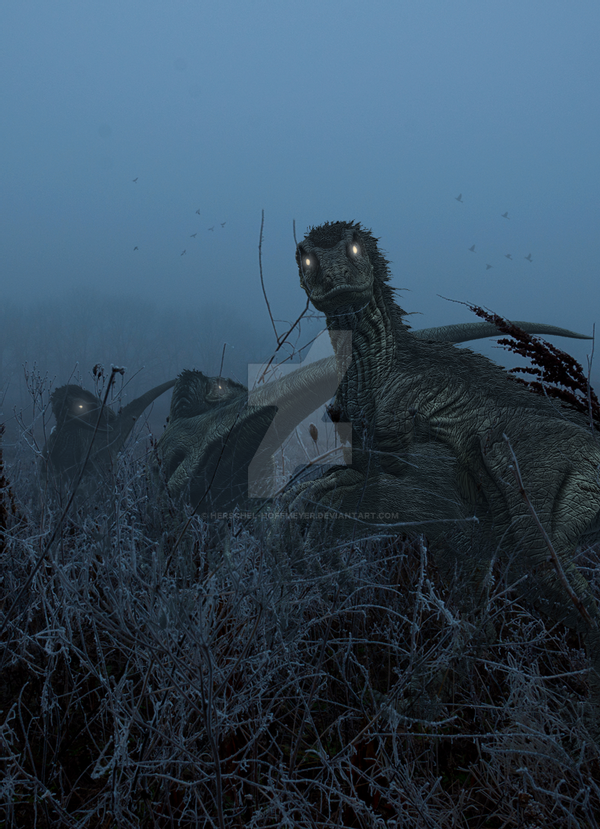
Source/fuente de Herschel-Hoffmeyer
Basiliscos | Basilisks
Si nos desviamos un poco del sur de Sothoryos y nos dirigimos más al Noroeste del continente encontraremos un pequeño cumulo de islas bastante cercano a la tierra continental, estas islas reciben el nombre de Islas del Basilisco.
Como su nombre lo indica este es el hogar de los Basiliscos, reptiles feroces y algunos muy grandes, que se arrastran entre la maleza, los más grandes poseen una envergadura es comparable a la de un tigre o un león y se asemejan mucho a los dragones de Komodo aunque se nos cuenta que los hay de muchos tamaños pero sin embargo todos son letales y extremadamente venenosos, su veneno es mortal para los seres vivos de sangre caliente pues este induce en un estado de locura y rabia alucinógena a quien entre en contacto con él.
Abundan en otras regiones aledañas pero su mayor población se encuentra en estas islas, son cazados con frecuencia a pesar de representar un gran peligro y ser depredadores muy eficientes pero de ellos se obtiene el llamado veneno de basilisco muy codiciado entre los maestres y alquimistas
Este animal está muy presente en las culturas de las ciudades de Essos, se considera un animal muy exótico en incluso en ocasiones se usa como método de entretenimiento para peleas entre animales entre otro tipo de crueldades.
If we deviate a little south of Sothoryos and head more to the northwest of the continent we will find a small cluster of islands quite close to the mainland, these islands are called Basilisk Islands.
As the name suggests this is the home of the Basilisks, ferocious reptiles and some very large, that crawl through the undergrowth, the largest have a wingspan is comparable to that of a tiger or a lion and closely resemble the dragons of Komodo although we are told that there are of many sizes but nevertheless all are lethal and extremely poisonous, Their venom is deadly for warm-blooded living beings because it induces a state of madness and hallucinogenic rage to whoever comes in contact with it.
They abound in other neighboring regions but their largest population is found in these islands, they are often hunted despite representing a great danger and being very efficient predators but from them is obtained the so-called basilisk venom highly coveted among the masters and alchemists.
This animal is very present in the cultures of the cities of Essos, it is considered a very exotic animal and sometimes it is even used as a method of entertainment for animal fights among other cruelties.
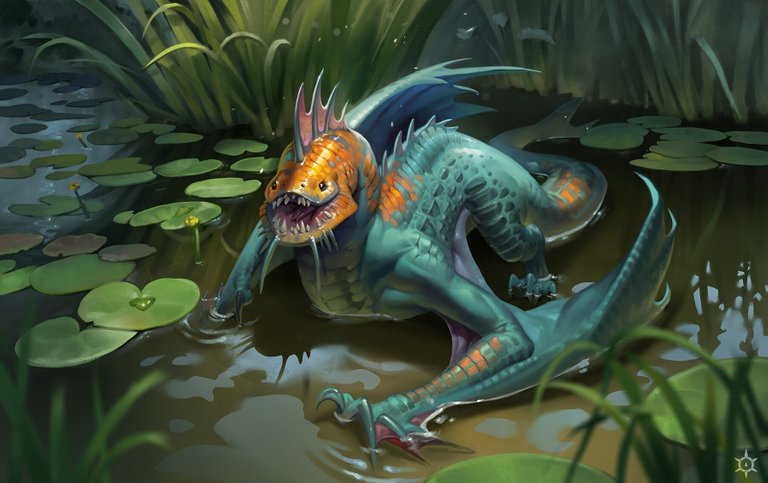
Dragones Marinos | Sea Dragons
Ahora abandonamos las selvas misteriosas y nos adentramos en el océano, concretamente en el Mar de los Escalofríos.
Allí viven unas misteriosas criaturas de aspecto imponente o poder desconocido, los dragones del mar. No se sabe mucho acerca de ellos, de hecho, no se sabe nada más que leyendas e historias de marineros que han navegado por estas aguas y afirman haberlos visto pero no se tiene información realmente cierta sobre la existencia de estos seres.
Pero no hay evidencia de su presencia en las novelas más allá de mitos y leyendas de navegantes pero no te entristezcas tu animo pues aquí te contaré lo que se dice de ellos.
Se cree que eran capaces de engullir un barco entero, son enormes, más grandes que los dragones alados de Valyria, sus cuerpos son largos trayectos de carne y escamas brillantes y blanquecinas, no tienen alas pero si algunos dicen que poseen grandes pliegues que les sirven de aletas.
Hay una leyenda muy antigua entre los Nacidos de Hierro que habla de Nagga un colosal dragón marino que no tenía parangón en los océanos, se cree que el Rey Gris dio muerte a esta criatura y con sus huesos adorno una estancia que aún se puede encontrar en las Islas de Hierro, sin duda una colosal criatura.
Now we leave the mysterious jungles and enter the ocean, specifically the Sea of Shivers.
There live some mysterious creatures of imposing appearance or unknown power, the sea dragons. Not much is known about them, in fact, nothing is known other than legends and stories of sailors who have sailed these waters and claim to have seen them but there is no really certain information about the existence of these beings.
But there is no evidence of their presence in novels beyond myths and legends of sailors but do not be saddened because here I will tell you what is said about them.
It is believed that they were capable of engulfing an entire ship, they are huge, larger than the winged dragons of Valyria, their bodies are long stretches of flesh and shiny, whitish scales, they have no wings but some say they have large folds that serve as fins.
There is a very old legend among the Ironborn that speaks of Nagga a colossal sea dragon that had no equal in the oceans, it is believed that the Grey King killed this creature and with his bones adorned a stay that can still be found in the Iron Islands, certainly a colossal creature.
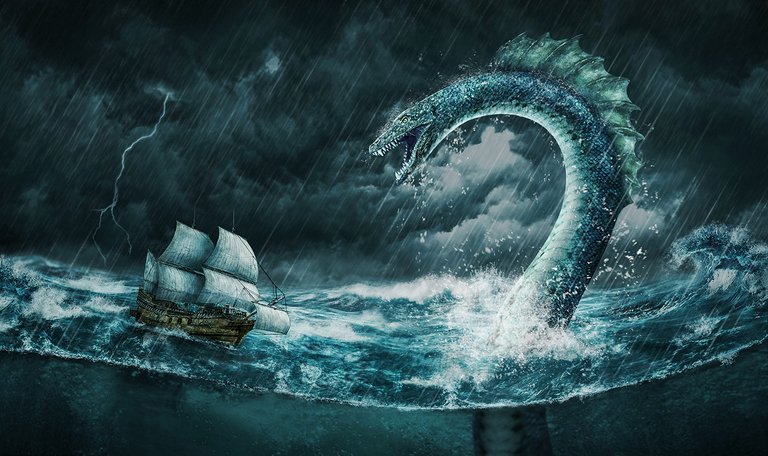
Lagartos Leon | Lion lizards
Estos animales habitan en los sinuosos pantanos de Westeros en las regiones del Cuello, región que delimita los reinos del Norte con los del sur. Estos reptiles hacen de este lugar uno muy peligroso, se camuflan bien en el suelo lodoso de las ciénagas y flotan en el agua cuales troncos derribados. No se sabe qué tamaño tienen, pero ha de ser similar a l de los cocodrilos, en Foso Cailin son usados como defensa de la fortaleza debido a su gran ferocidad.
These animals inhabit the winding marshes of Westeros in the Neck regions, the region that delimits the northern and southern kingdoms. These reptiles make this place a very dangerous one, they camouflage themselves well in the muddy soil of the marshes and float in the water like fallen logs. It is not known what size they are, but it must be similar to crocodiles, in Moat Cailin they are used as a defense of the fortress due to their great ferocity.
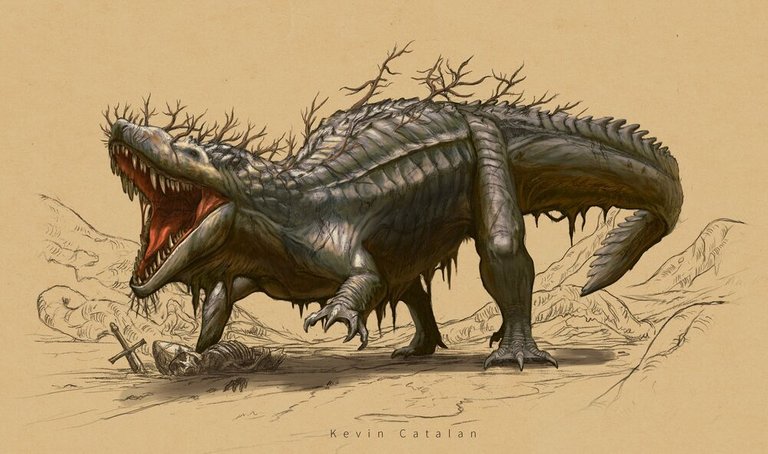
Tortuga Gigante de Rhoynar | Rhoynar Giant Tortoise
Antiguas habitantes del rio Rhoyne, aunque no se sabe con certeza si este animal aún sigue vivo o se halla extinto, lo cierto es que fueron considerados por los Rhoynar como un animal sagrado y le llamaron el Viejo del Río en honor a la deidad hija de la Madre Rhoyne cuya forma corpórea es representada por una tortuga gigante.
Ancient inhabitants of the Rhoyne River, although it is not known with certainty if this animal is still alive or is extinct, it is certain that they were considered by the Rhoynar as a sacred animal and called the Old Man of the River in honor of the daughter deity of the Rhoyne Mother whose corporeal form is represented by a giant turtle.
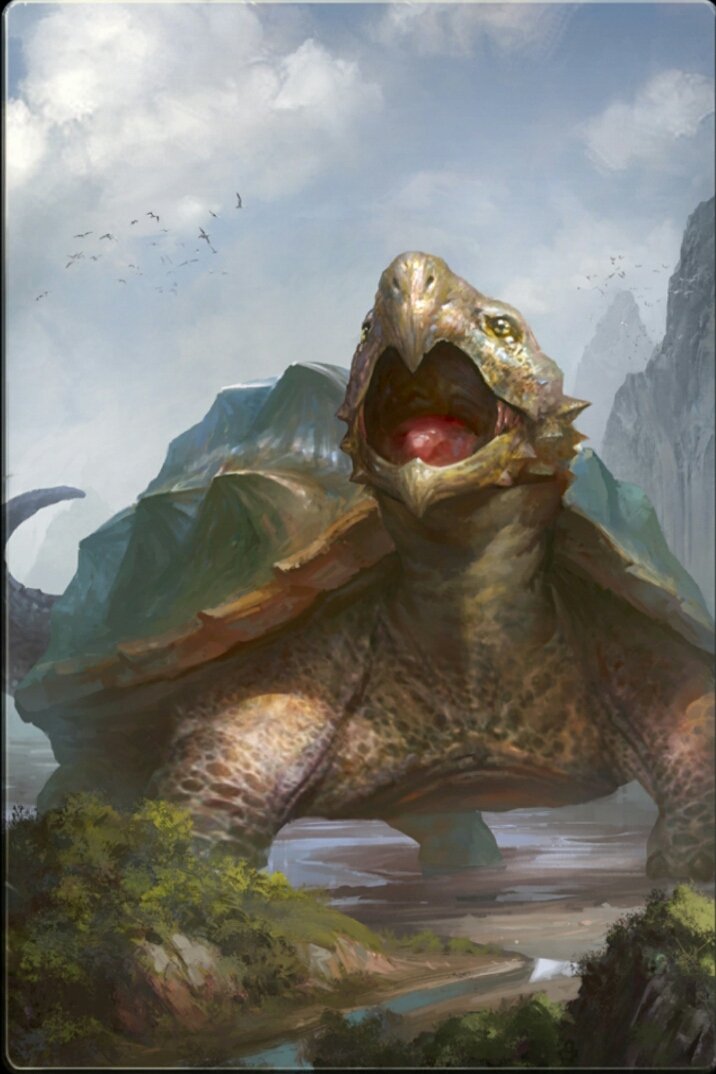
Dragones de Hielo | Ice Dragons
Al igual que con los dragones marinos no hay evidencia de que estos ejemplares alguna vez existieron más que los testimonies de navegantes y marineros, son las criaturas más inusuales y enigmáticas del Mar de los Escalofríos.
Se dice que al igual que los dragones marinos, son más grandes que sus parientes de Valyria, sus cuerpos son de hielo brillante y vivo con ojos penetrantes de un azul cristalino e intenso, sus alas son translucidas, casi indistinguibles pues dejan pasar la luz a través de ellas y da la impresión de que sus cuerpos simplemente levitaran en las alturas, su aliento no es necesariamente de hielo pero despide un frio tan mortal que es capaz de helar cualquier navío o ser vivo en tan solo unos pocos instantes.
As with sea dragons there is no evidence that these specimens ever existed other than the testimonies of sailors and mariners, they are the most unusual and enigmatic creatures of the Sea of Shivers.
It is said that like sea dragons, they are larger than their Valyrian relatives, their bodies are made of bright and vivid ice with piercing eyes of an intense crystalline blue, their wings are translucent, almost indistinguishable as they let light pass through them and give the impression that their bodies simply levitate in the air, their breath is not necessarily ice but gives off a cold so deadly that it is capable of freezing any ship or living being in just a few moments.
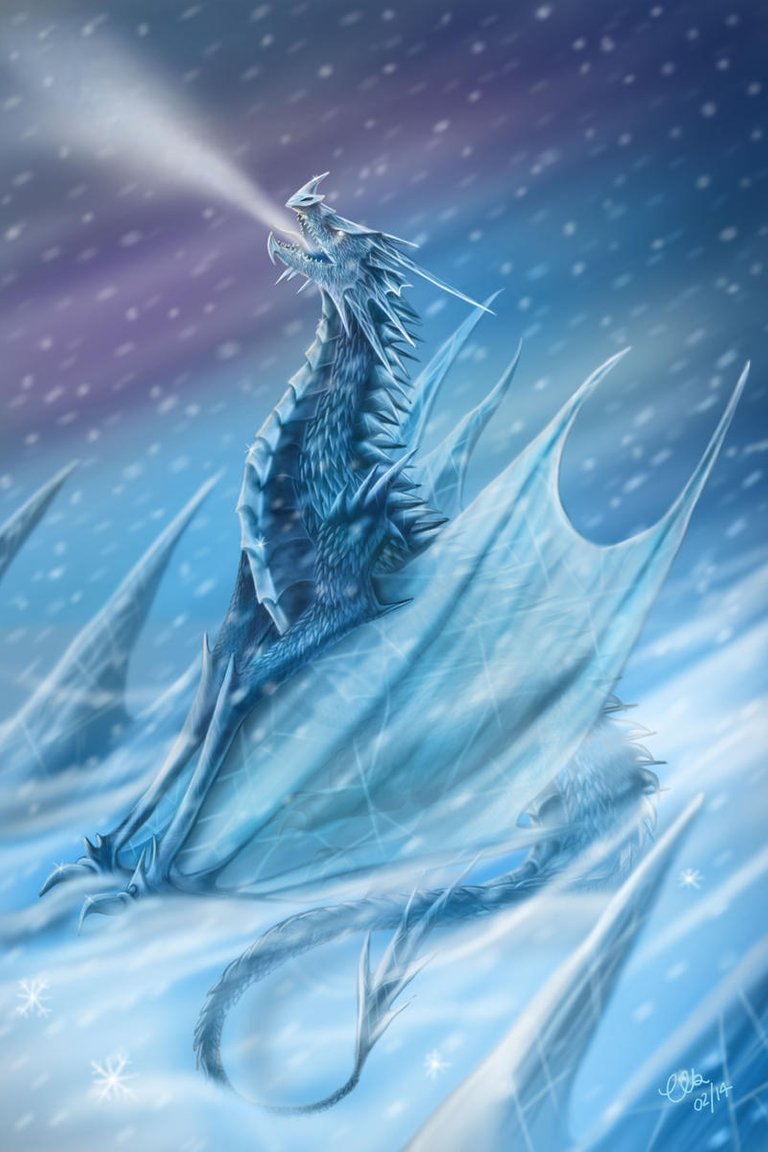

Por ahora este es el final del safari | For now this is the end of the safari
Ha sido un viaje bastante gratificante y educativo por le increíble bestiario de Canción de Hielo y Fuego, peor aún falta mucho por recorrer y por ahora descansaremos aquí para retomar la senda salvaje próximamente. Si te gustó la lectura no olvides darle amor a esta entrada. Si gustas sígueme para más contenido sobre Canción de Hielo y Fuego y muchas otras sagas más.
It has been quite a rewarding and educational journey through the incredible bestiary of A Song of Ice and Fire, but there is still a long way to go and for now we will rest here to resume the wild path soon. If you liked the reading don't forget to give love to this post. If you like follow me for more content about A Song of Ice and Fire and many other sagas.
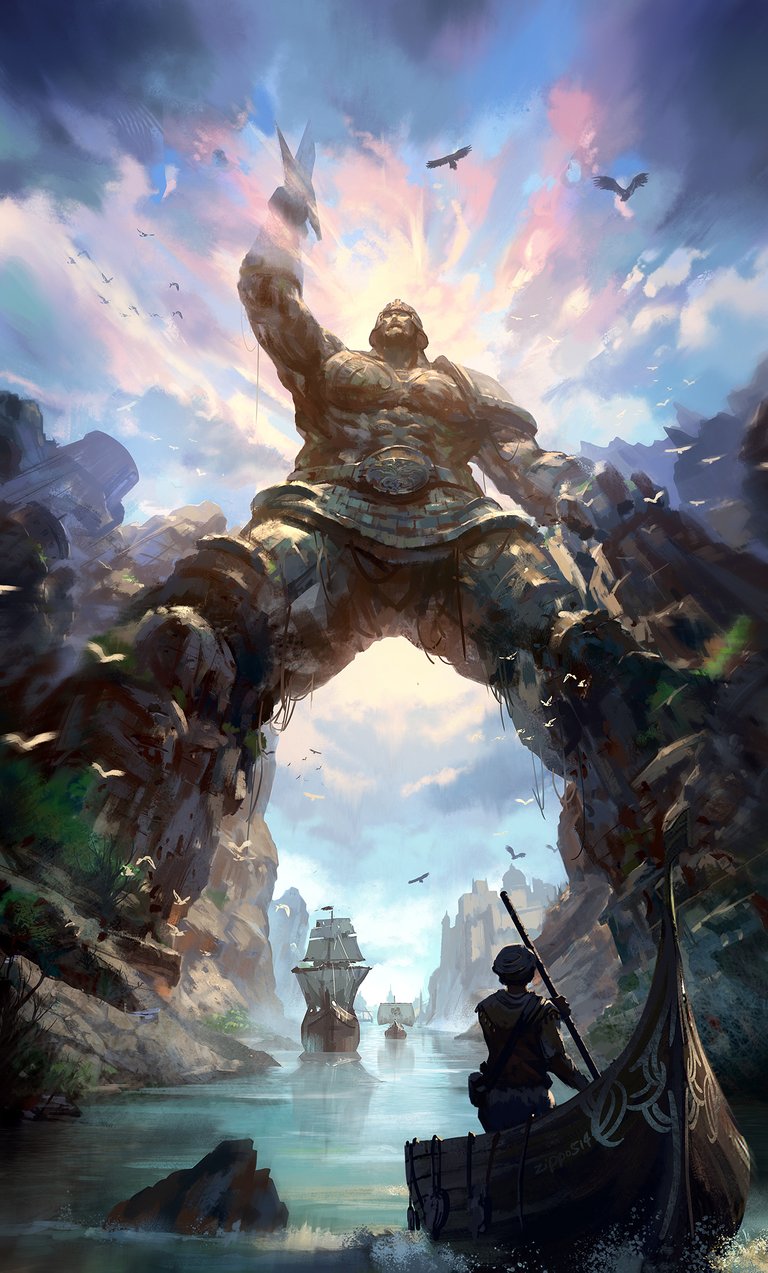

Referencias bibliográficas | Bibliographic references
- Canción de Hielo y Fuego: Juego de Tronos. Escrito por George RR Martin.
- Canción de Hielo y Fuego: Choque de Reyes. Escrito por George RR Martin.
- Canción de Hielo y Fuego: Tormenta de Espadas. Escrito por George RR Martin.
- Canción de Hielo y Fuego: Festín de Cuervos. Escrito por George RR Martin.
- Canción de Hielo y Fuego: Danza de Dragones. Escrito por George RR Martin.
- El Mundo de Hielo y Fuego. Escrito por George RR Martin.
Edición realizada con; Canva
Traducción realizada con; Deep Traductor
